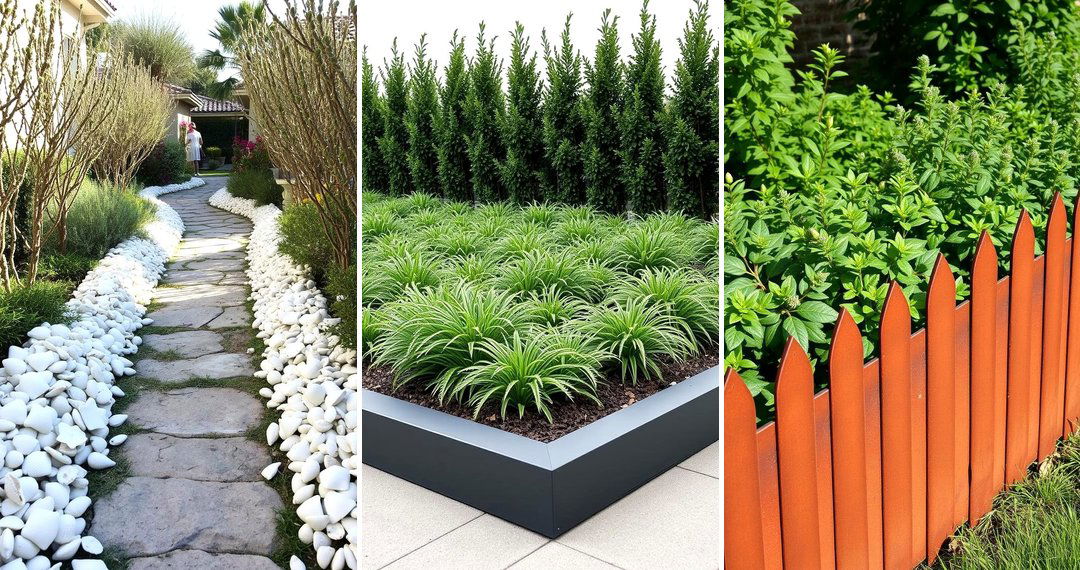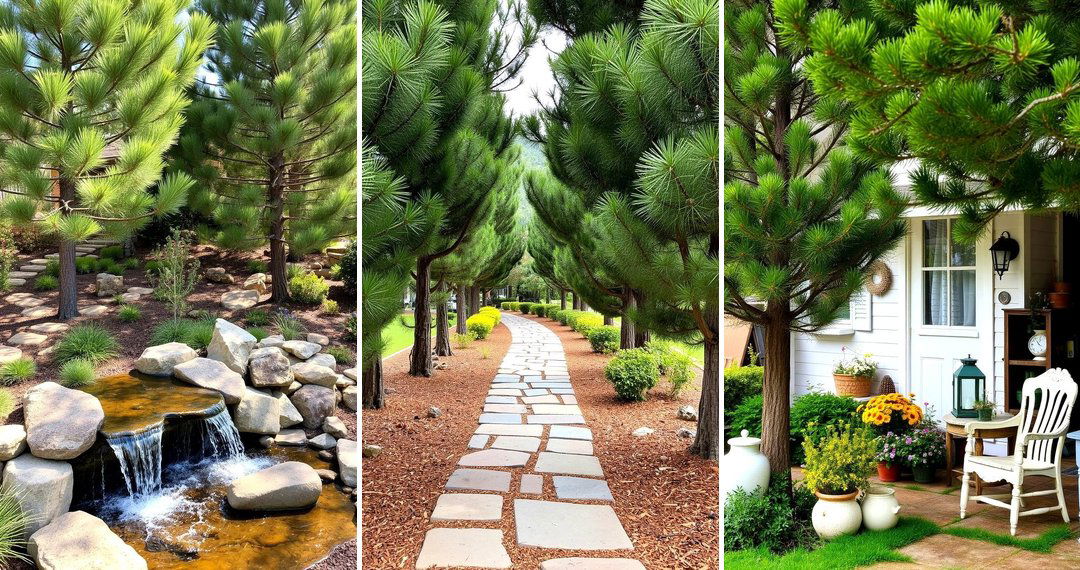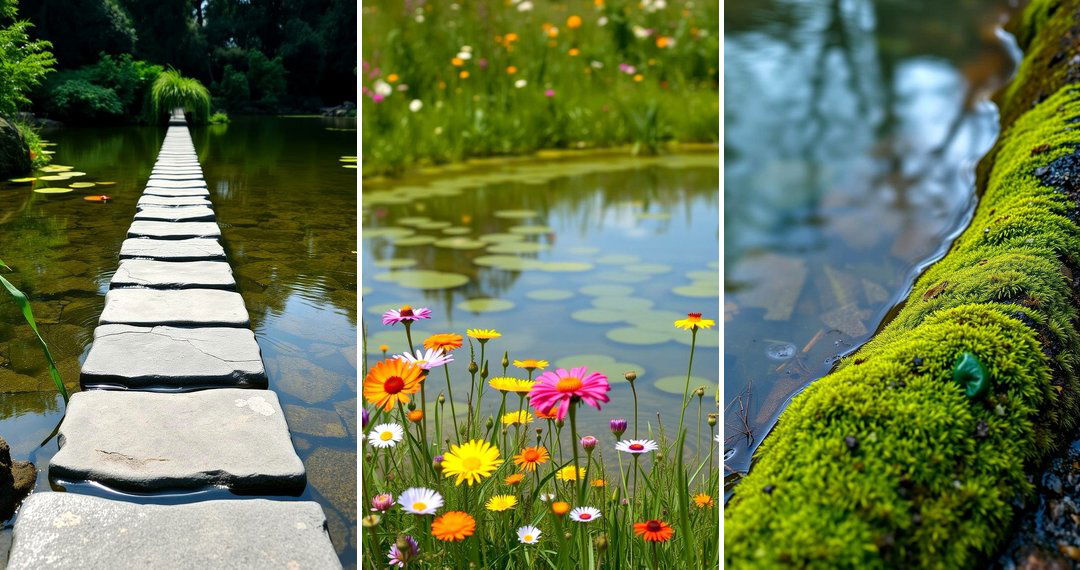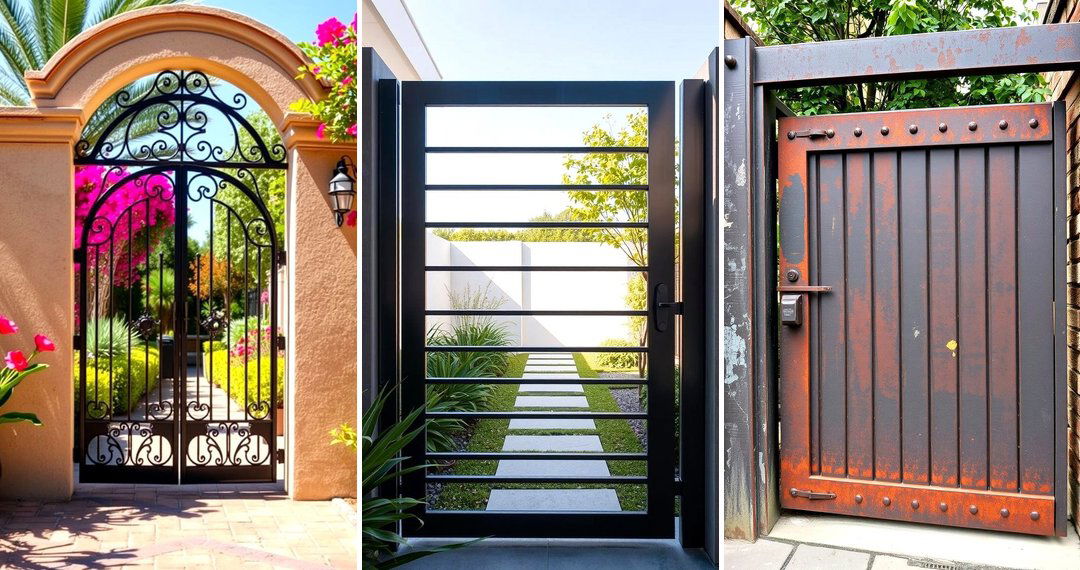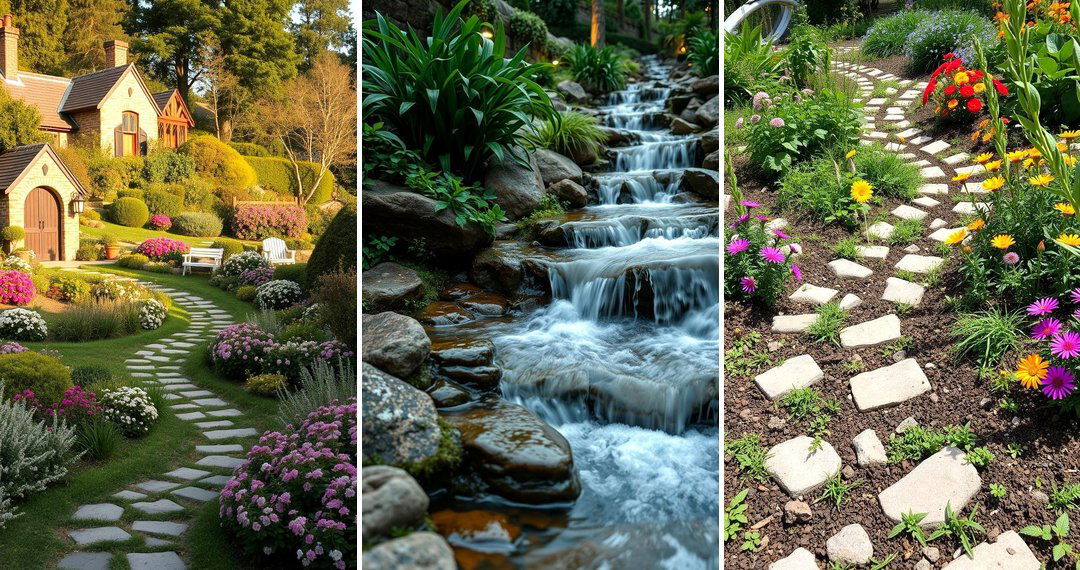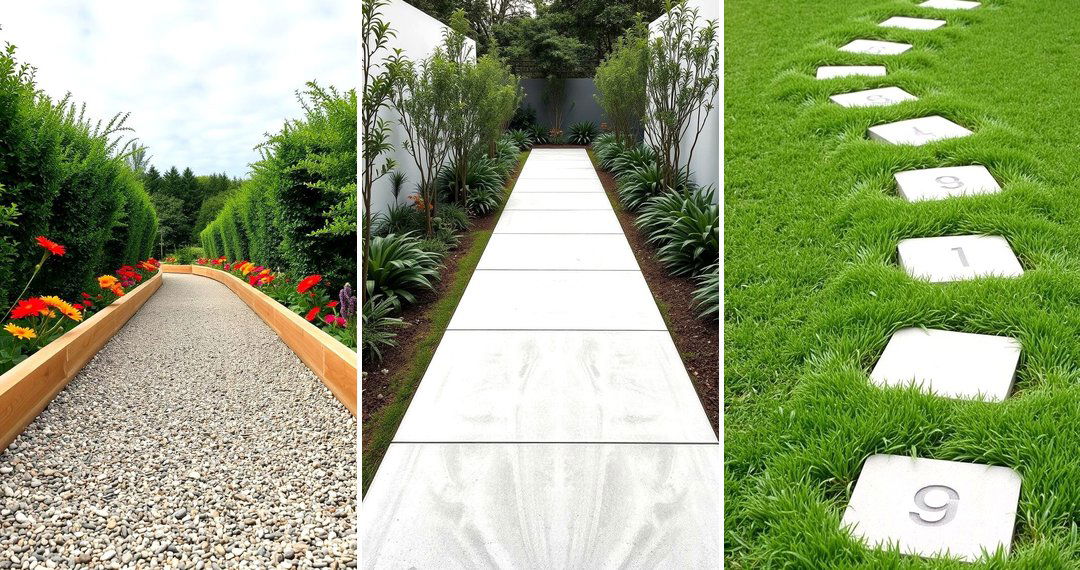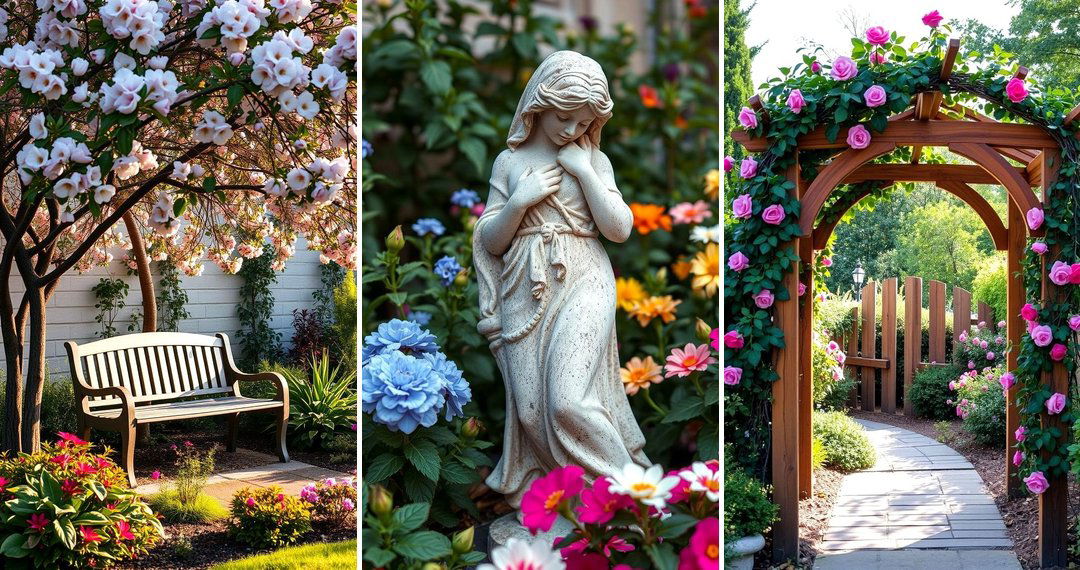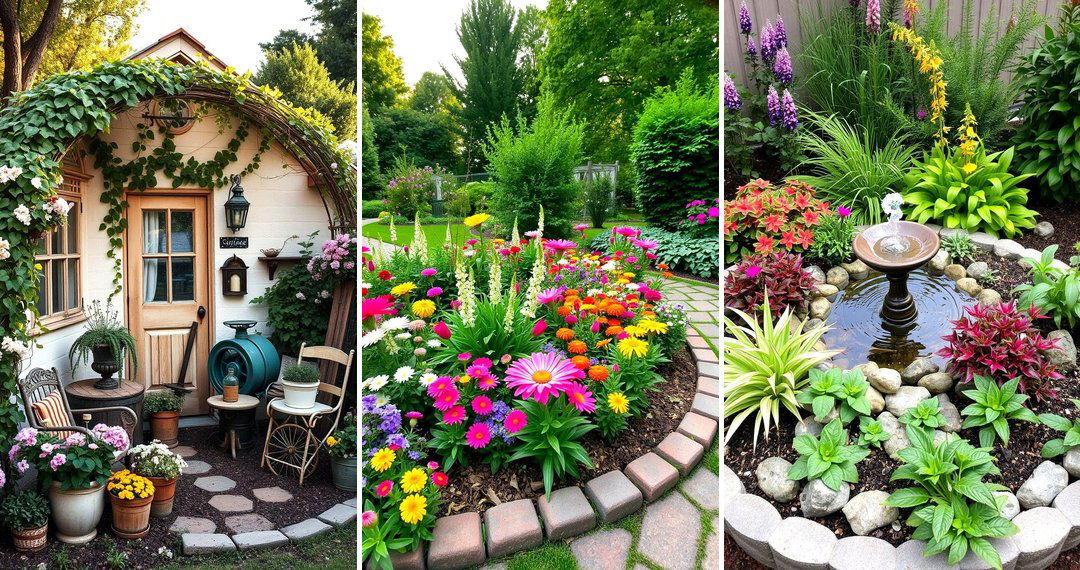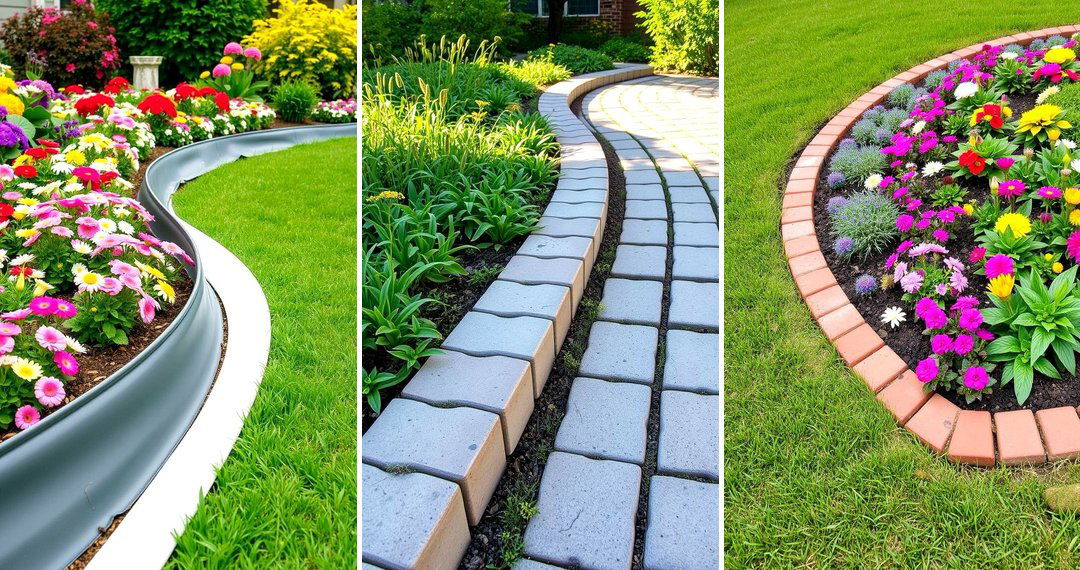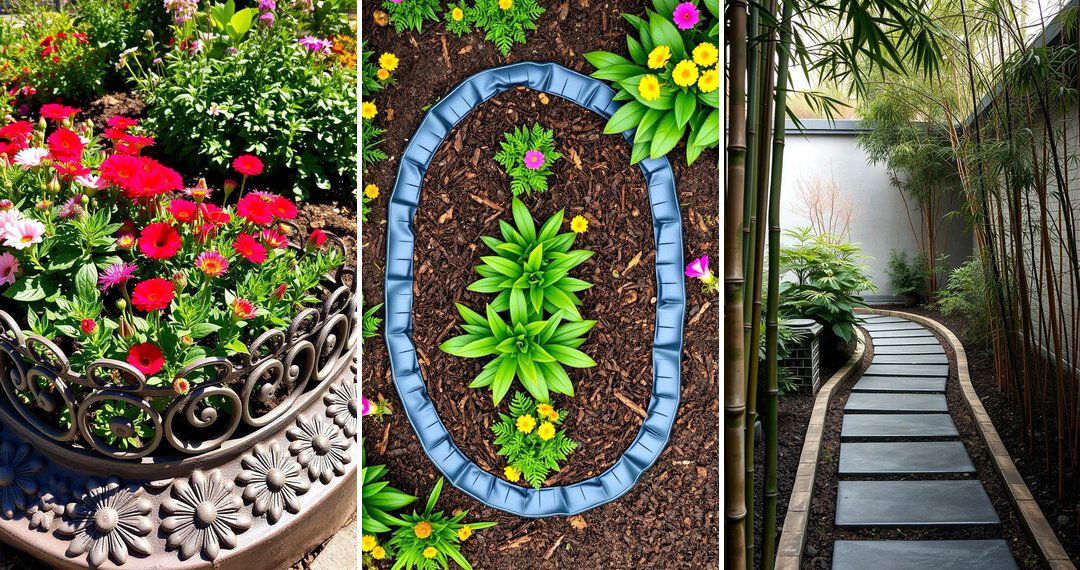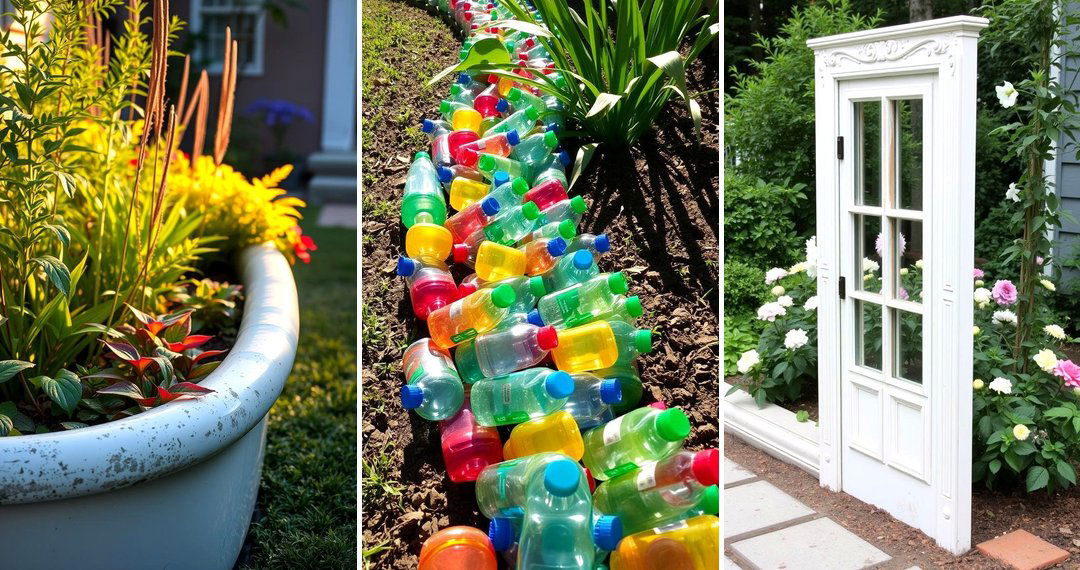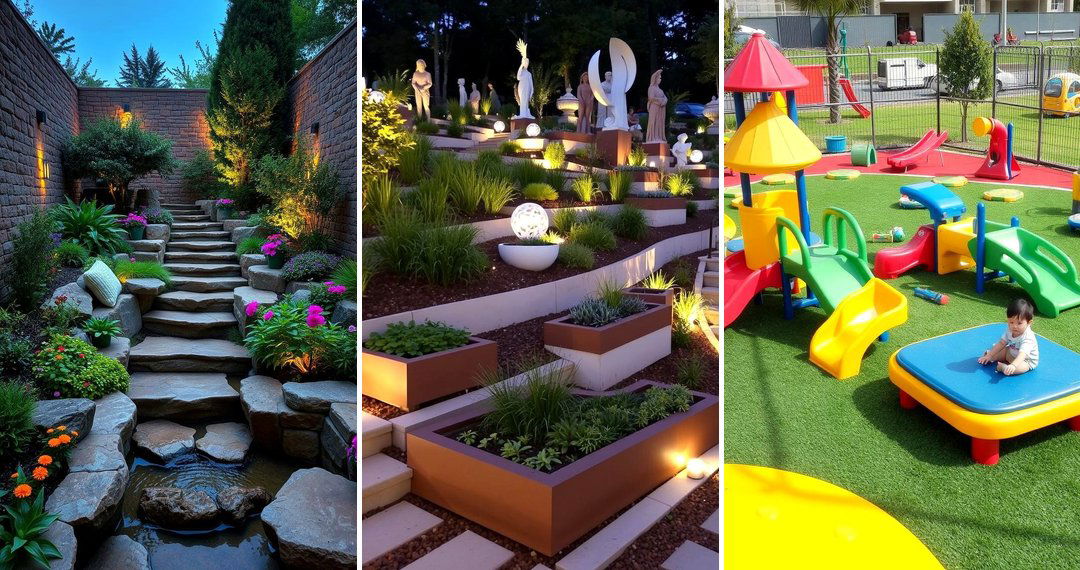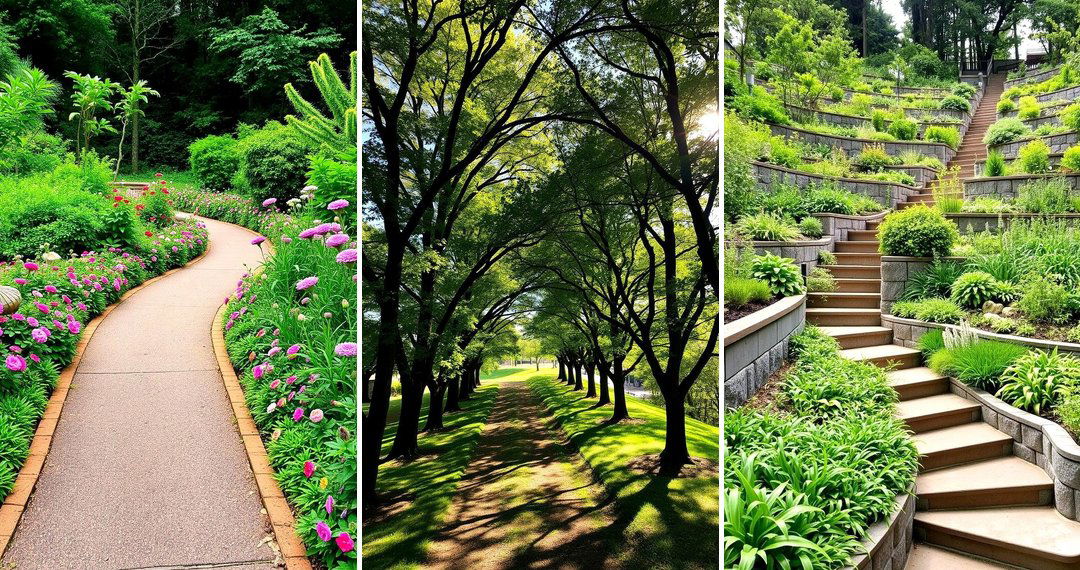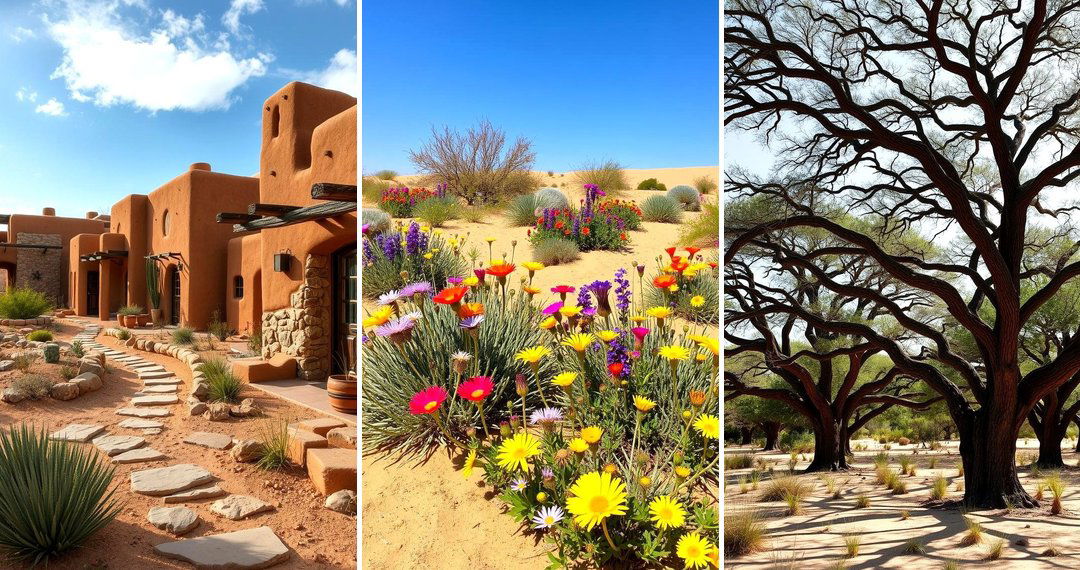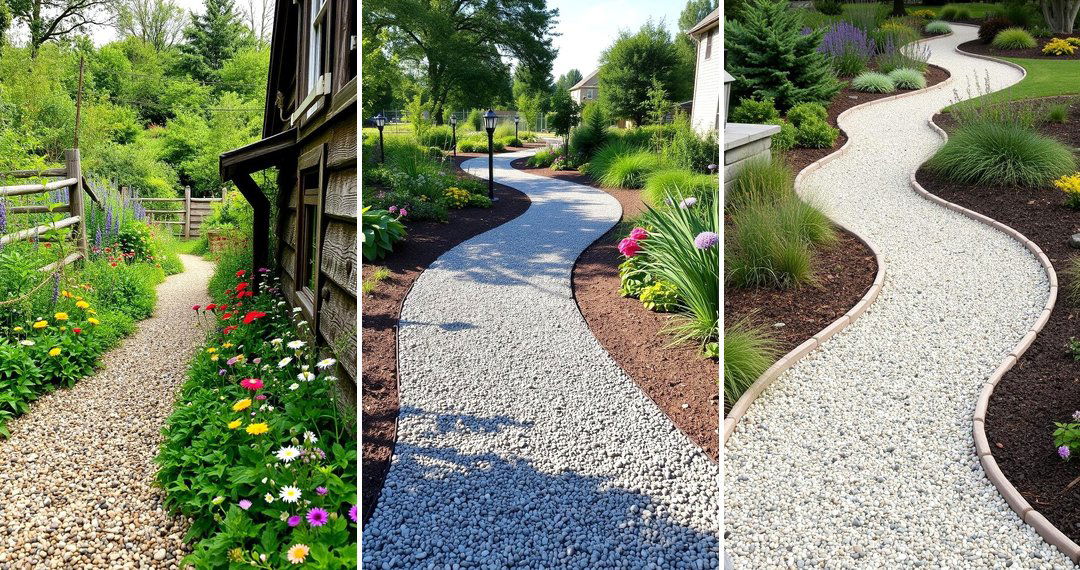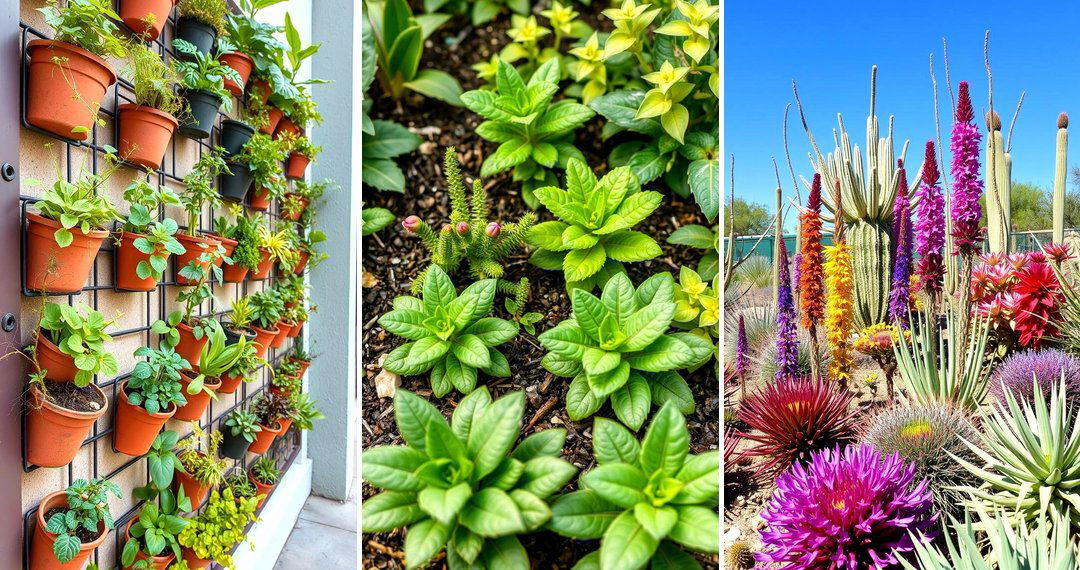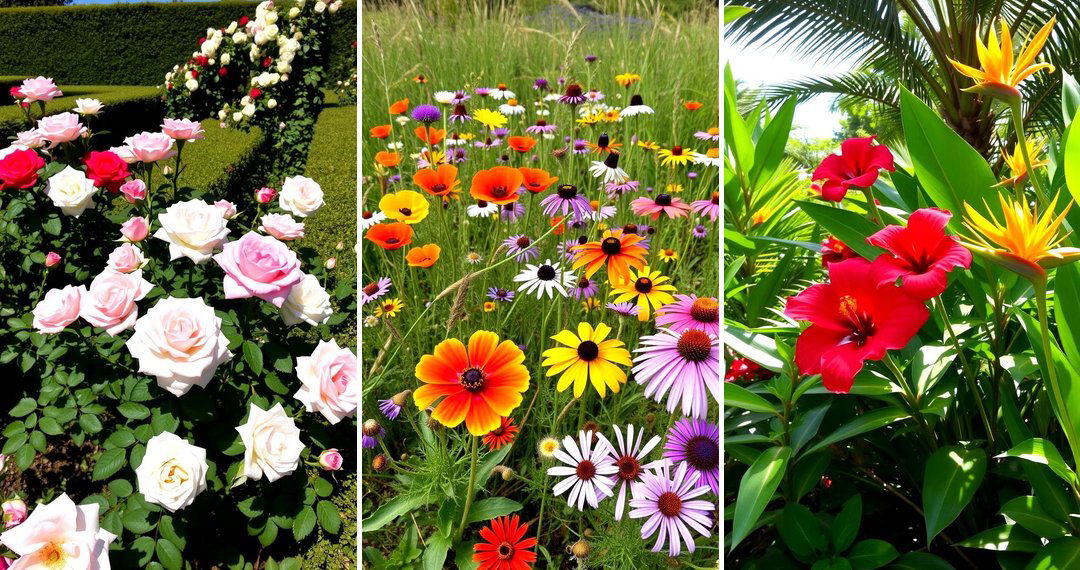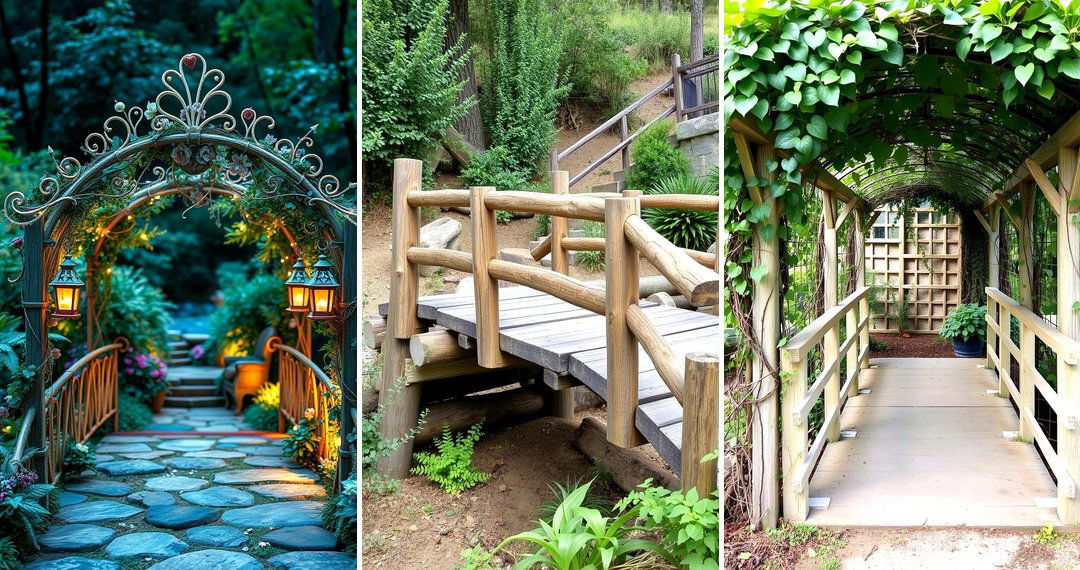Introduction:
Stone garden edging ideas can transform any outdoor space, adding structure, beauty, and functionality. Whether you're looking to define garden beds, create pathways, or protect plants from wandering weeds, stones are a versatile material that enhances the aesthetic and practical aspects of your garden. Not only do stone borders help maintain the integrity of your plantings, but they also offer a timeless look that complements various garden styles. Explore these 24 innovative stone garden edging ideas to inspire your next outdoor project and bring fresh life to your landscape design.
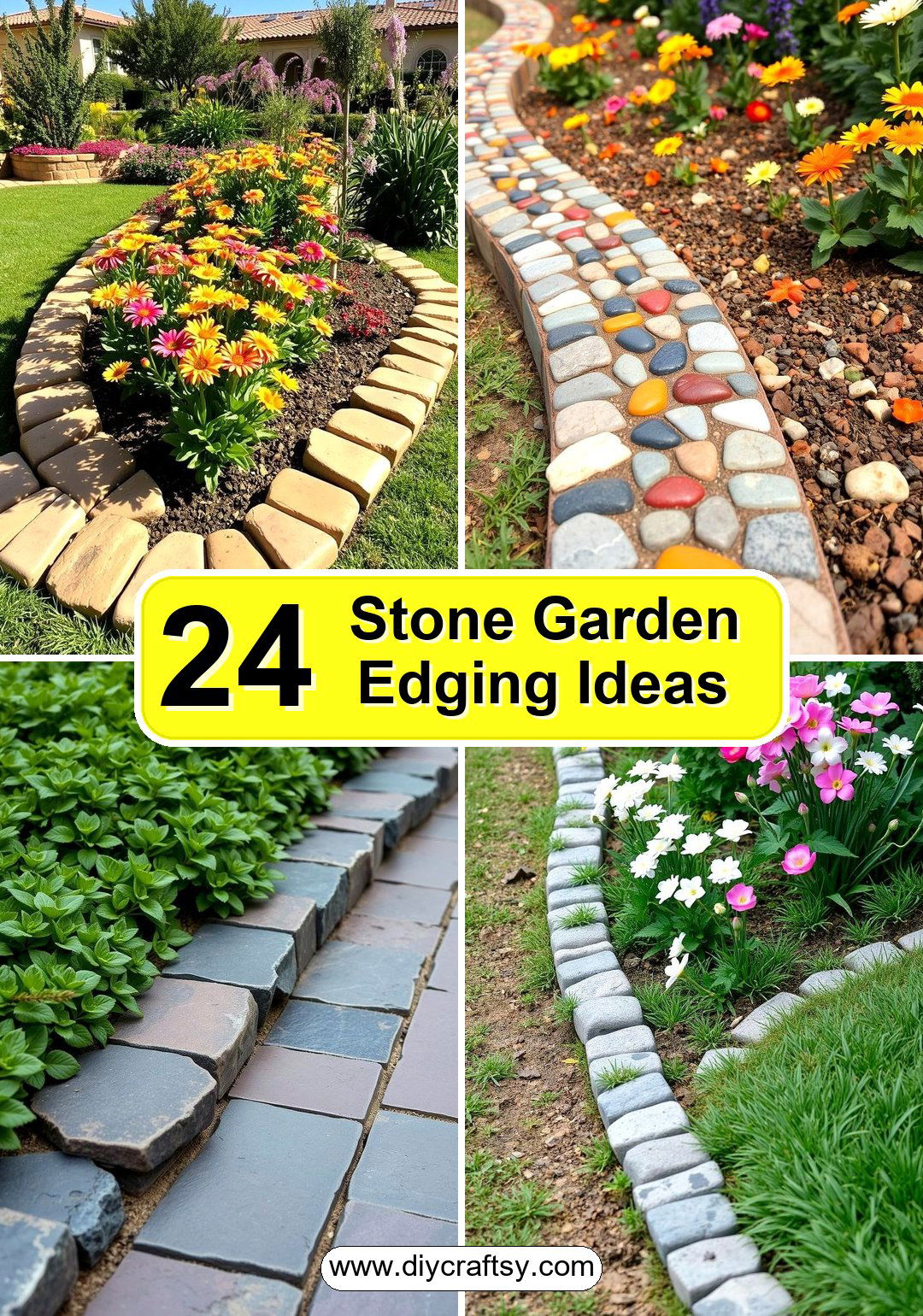
1. Traditional Brick Stone Edging
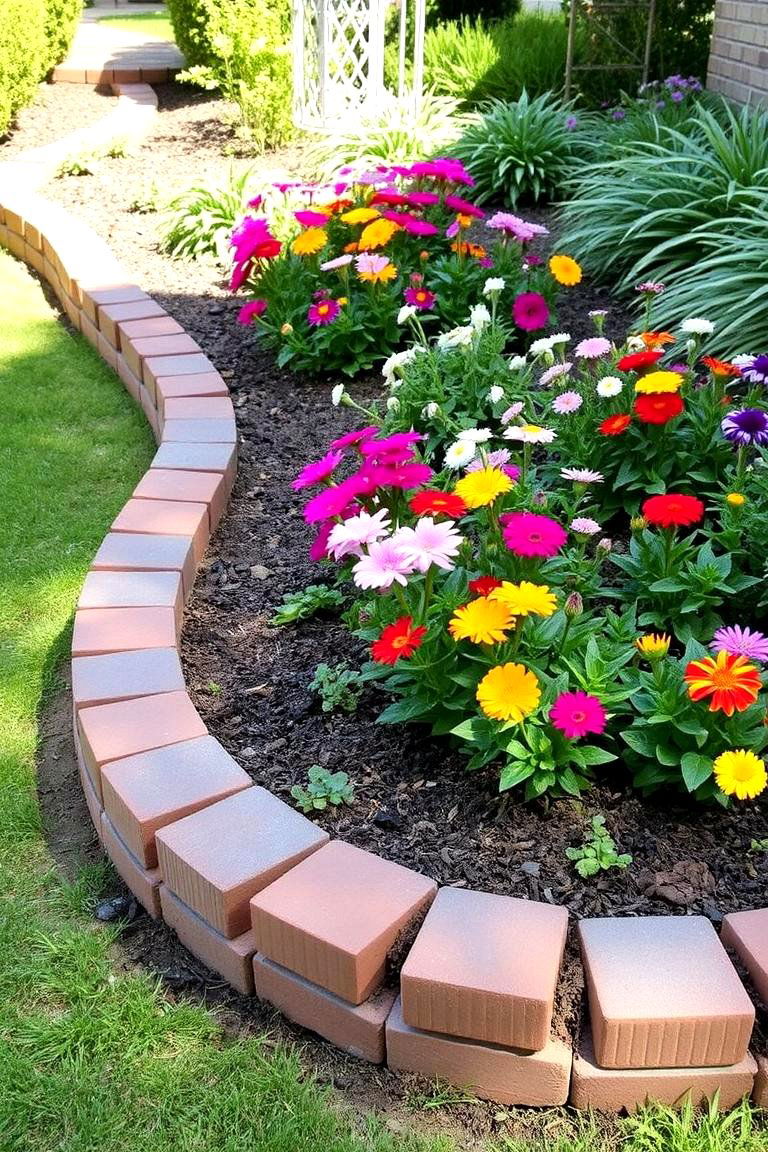
A classic and reliable option, brick stone edging offers a clean, structured look that suits almost any garden. The neat lines and warm, earthy tones of the bricks create a timeless border that adds both function and beauty. Bricks are highly durable and easy to install, providing a solid boundary that can separate different areas in your garden without overwhelming the space. Their versatility allows them to pair with various plant types, from formal hedges to wildflower beds.
2. Natural River Rock Edging
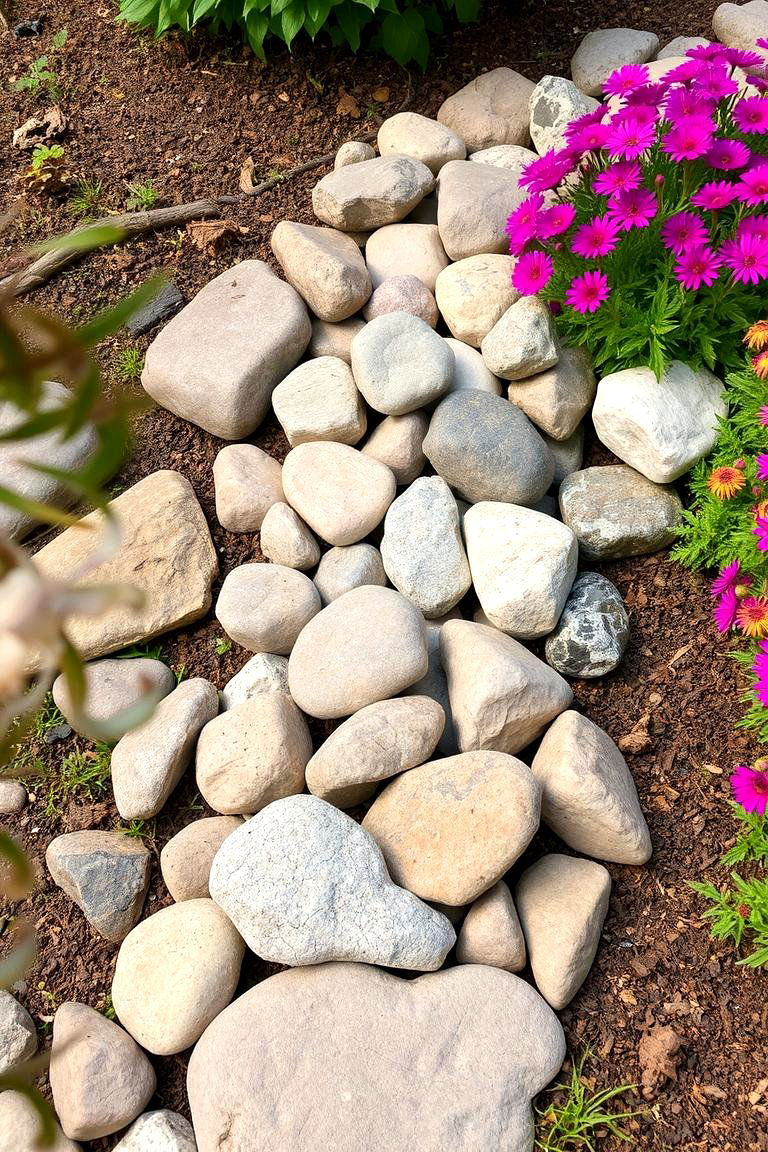
For a more organic look, consider using natural river rocks to line your garden. These smooth, rounded stones come in varying sizes and earthy tones, which create a natural flow while maintaining a rustic charm. River rocks are perfect for creating a soft, more fluid edge that works well in gardens with a more naturalistic design. They are also excellent for drainage purposes, making them a practical choice in areas prone to water accumulation.
3. Slate Stone Edging
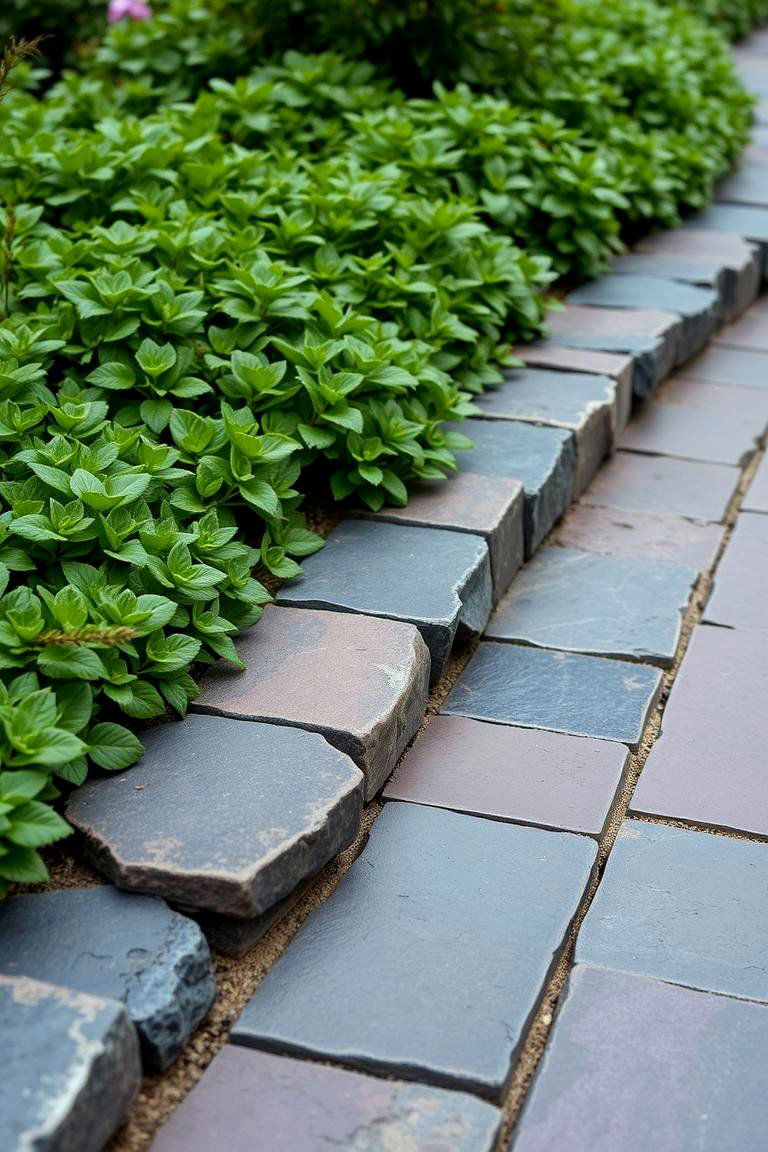
Add a touch of elegance with slate stone edging. This flat, finely textured stone creates sharp, clean lines while giving your garden a sleek, sophisticated look. Slate's dark hues—ranging from deep purples to blues—offer a striking contrast against vibrant garden plants. Due to their layered structure, slate stones can be stacked easily to form higher edges, adding height and dimension to your garden beds.
4. Boulder Stone Edging
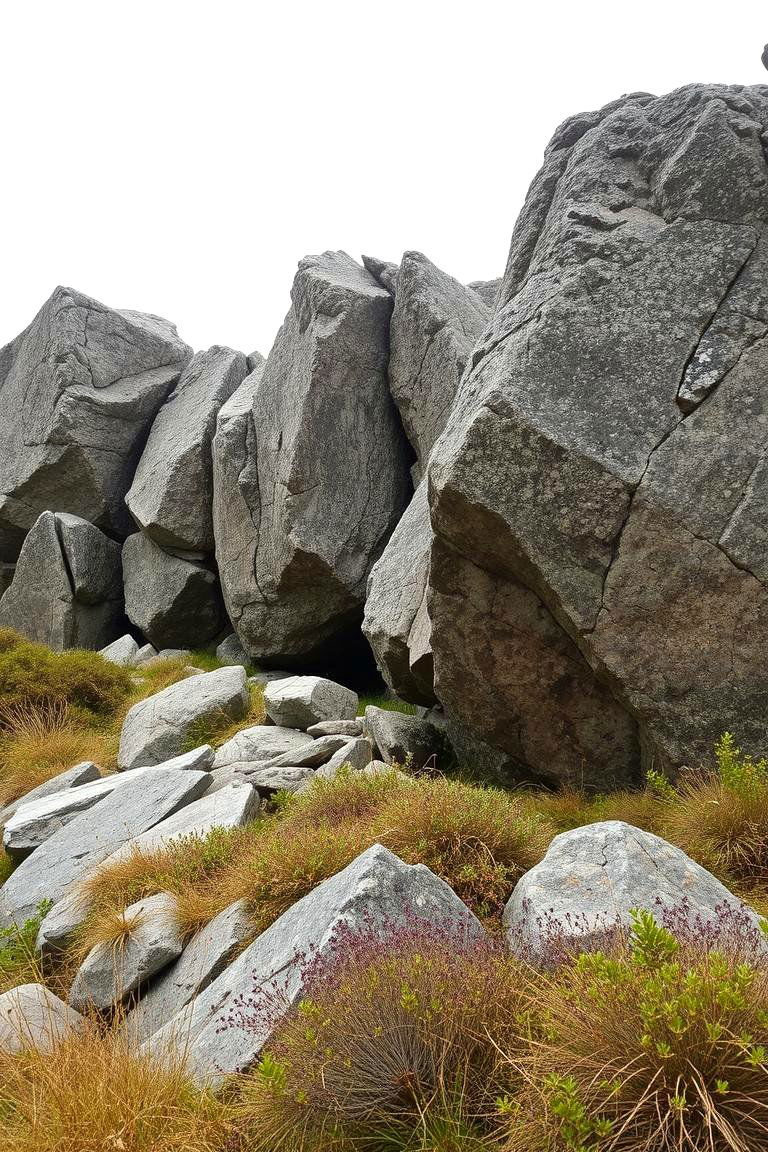
If you're aiming for a more dramatic and natural effect, boulder stone edging could be the perfect choice. Large, jagged rocks can be placed along the borders to create a bold statement. Boulder stone is excellent for landscaping with a wild or mountainous theme. The irregular shapes and varying sizes add texture and visual interest, while their large mass ensures they stay firmly in place, providing a durable boundary that will last for years.
5. Cobblestone Garden Edging
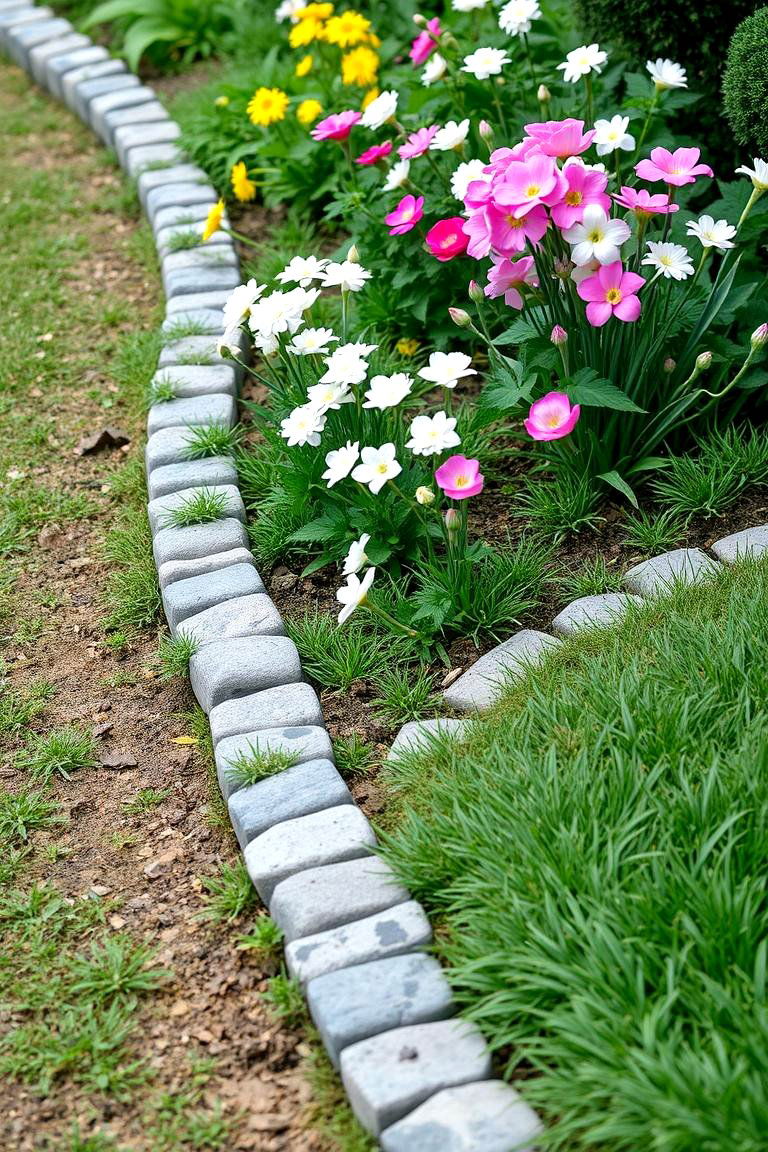
Cobblestones offer a charming and historic look that complements traditional garden designs. Their small size and rounded edges make them easy to work with, allowing you to create smooth, curving borders that guide the eye through your space. Cobblestones can be set tightly together or spaced slightly apart for a more casual effect. This versatile material pairs well with lush, green lawns or blooming flower beds.
6. Flagstone Edging
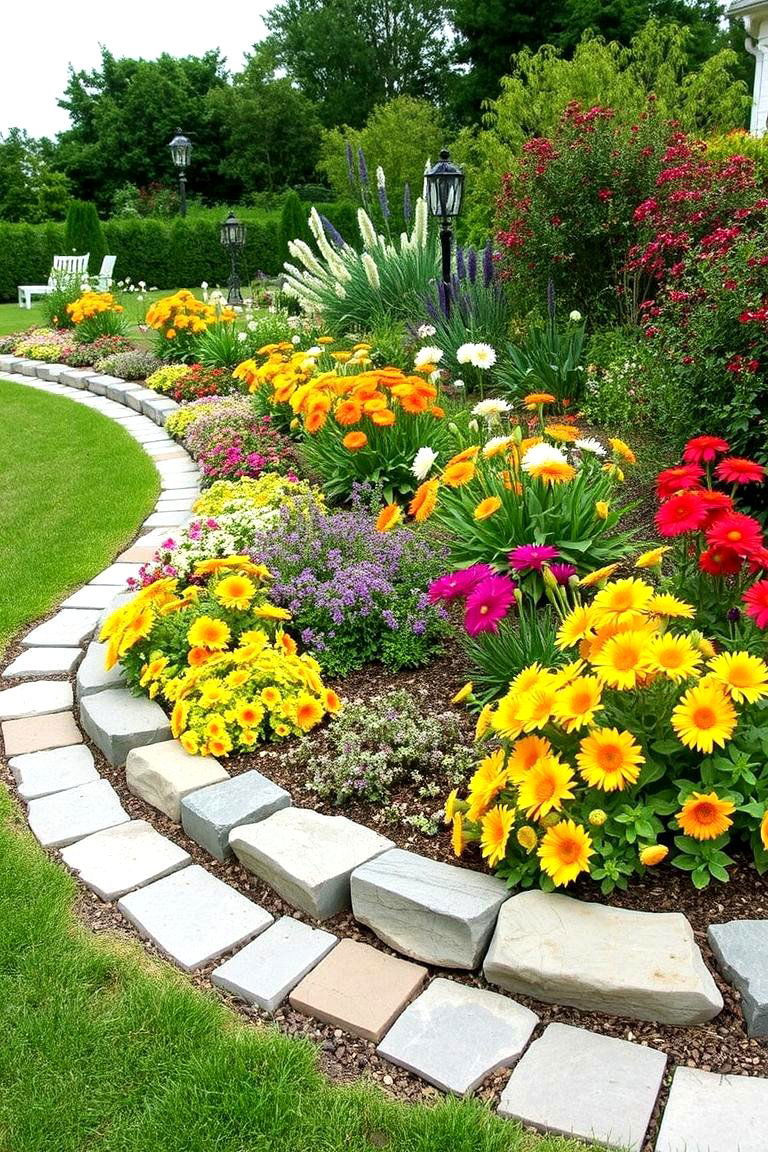
For a natural, understated edge, flagstone is a fantastic option. These flat, irregular stones can be placed in a row along garden beds or pathways, creating a low-profile border that blends seamlessly into the landscape. Flagstone's muted colors—ranging from soft browns and grays—complement a variety of plantings and surrounding materials. Additionally, flagstone works well for gardens that need a more subtle separation without drawing too much attention.
7. Pebble Stone Edging

Pebble stone edging offers a light, airy look that is perfect for minimalistic or modern garden designs. Small, rounded stones come in a variety of colors and textures, allowing for creative combinations. The low profile of pebble stone creates a gentle border that doesn’t overpower the plants. This type of edging works especially well in Zen gardens or areas where you want to highlight the plants and their natural beauty.
8. Concrete Block Edging
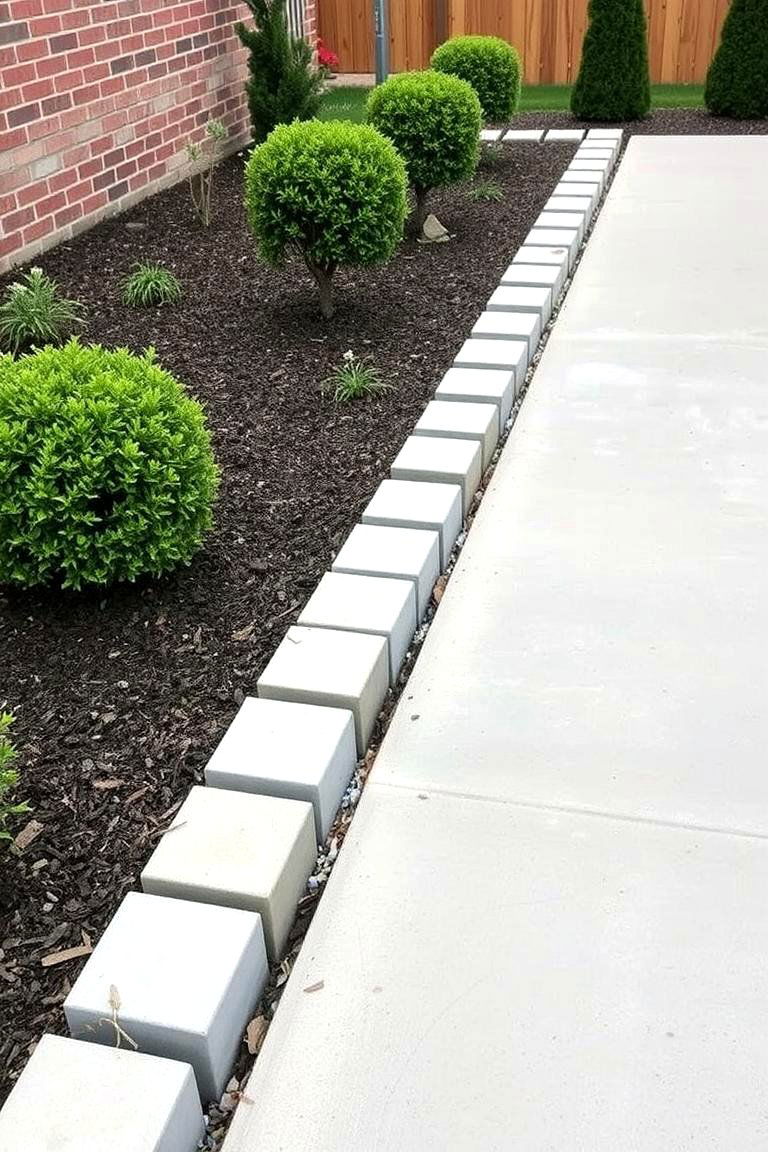
Concrete block edging is an affordable and practical solution for clean, straight garden borders. Available in a range of colors and sizes, concrete blocks can be stacked to create a sturdy barrier that requires little maintenance. This material is ideal for creating sharp, geometric lines in your garden while offering a contemporary touch. Concrete block edging is highly customizable and can be used for both formal and informal garden designs.
9. Limestone Edging
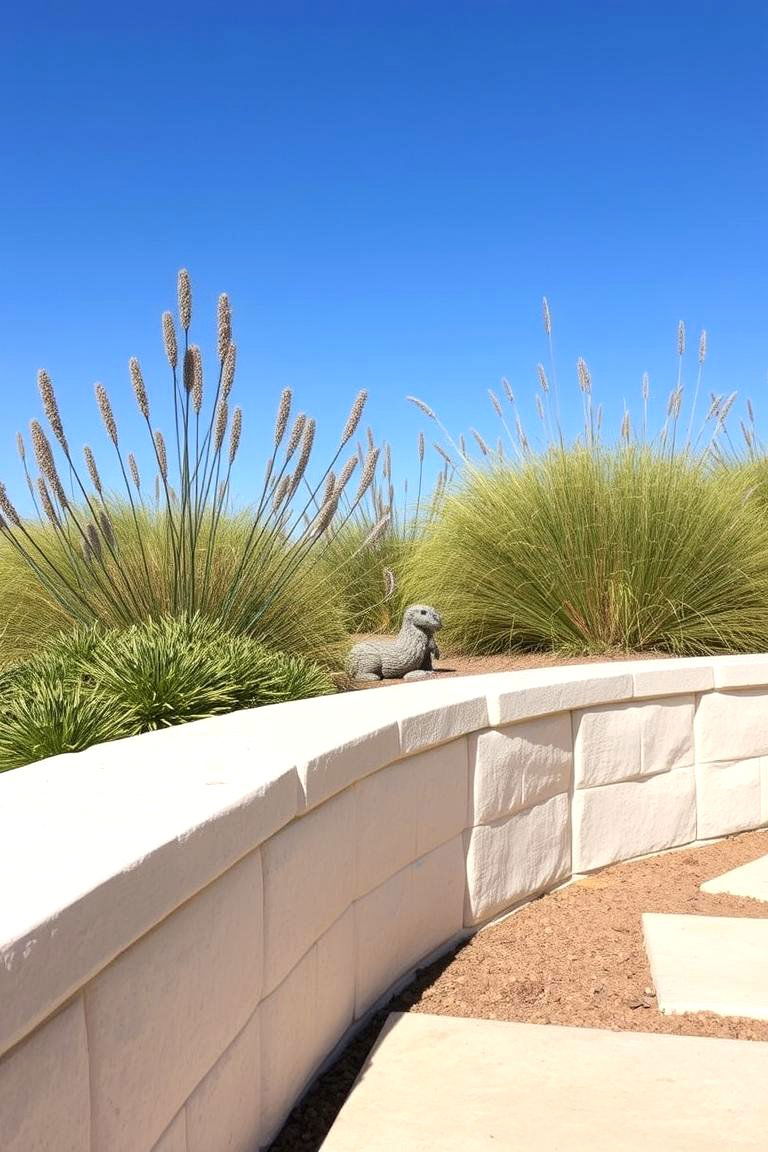
If you're looking for a stone that blends with a wide variety of outdoor themes, limestone is a great option. Its pale, soft hues lend a natural elegance that complements both rustic and modern garden styles. Limestone is sturdy, weather-resistant, and can be arranged in neat rows or more organically for a fluid look. This type of stone is particularly effective in dry, sunny climates as it retains its appearance without much maintenance.
10. Sandstone Edging
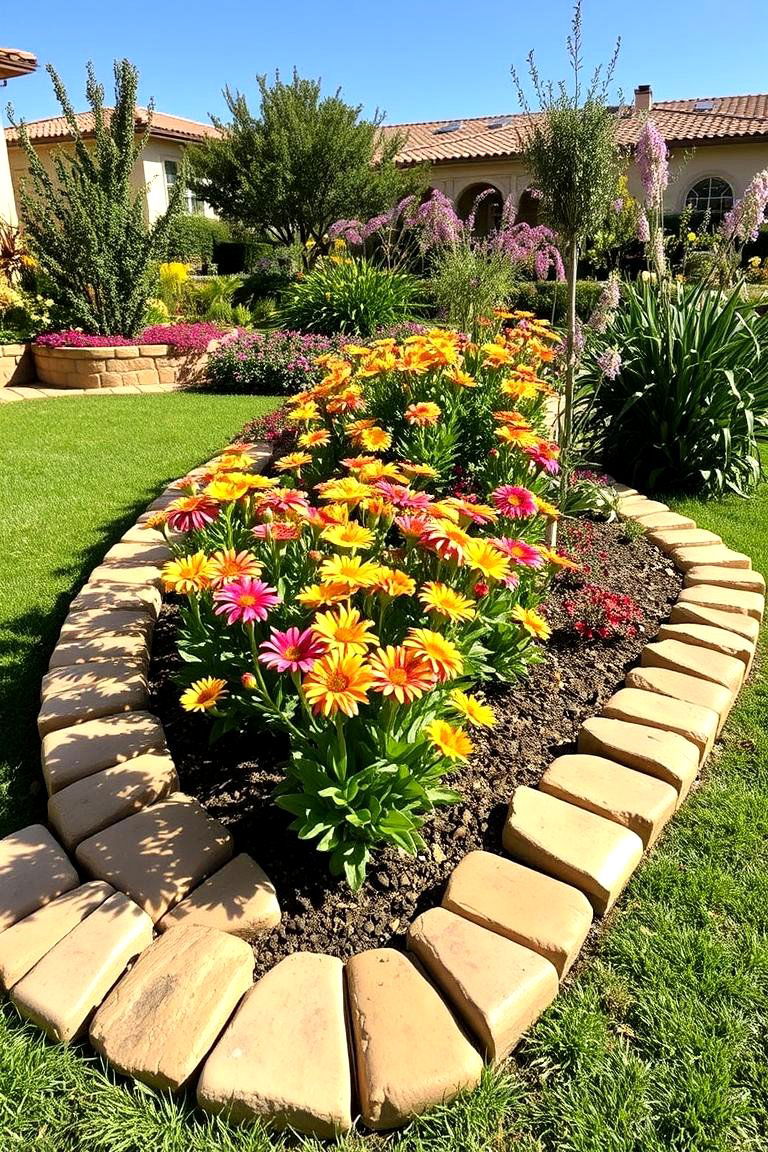
Sandstone brings a warm, golden color palette to your garden edges. Its naturally textured surface offers an earthy, natural feel that works well in informal garden settings. Sandstone is highly durable and can be used in a range of garden designs, from Mediterranean to Southwestern styles. The smooth, layered surfaces of the stone are easy to manipulate, making them perfect for curving edges or creative shapes.
11. Vintage Stone Edging
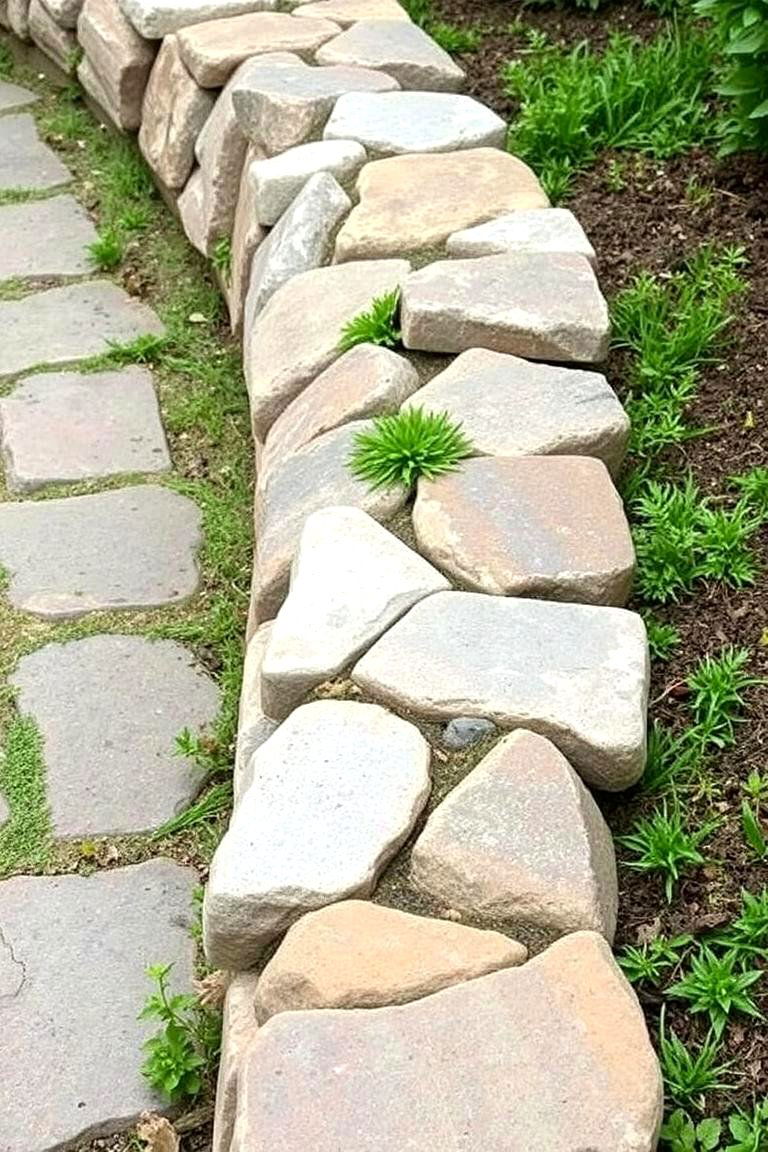
Bring a touch of history to your garden with vintage stone edging. Reclaimed stones from old buildings or pathways have a worn, weathered look that adds character and charm to your garden. These stones often come in irregular shapes and sizes, giving you the flexibility to create a more rustic, eclectic border. Vintage stone edging is perfect for gardens with a shabby-chic or historic theme, offering a unique, one-of-a-kind touch.
12. Granite Edging
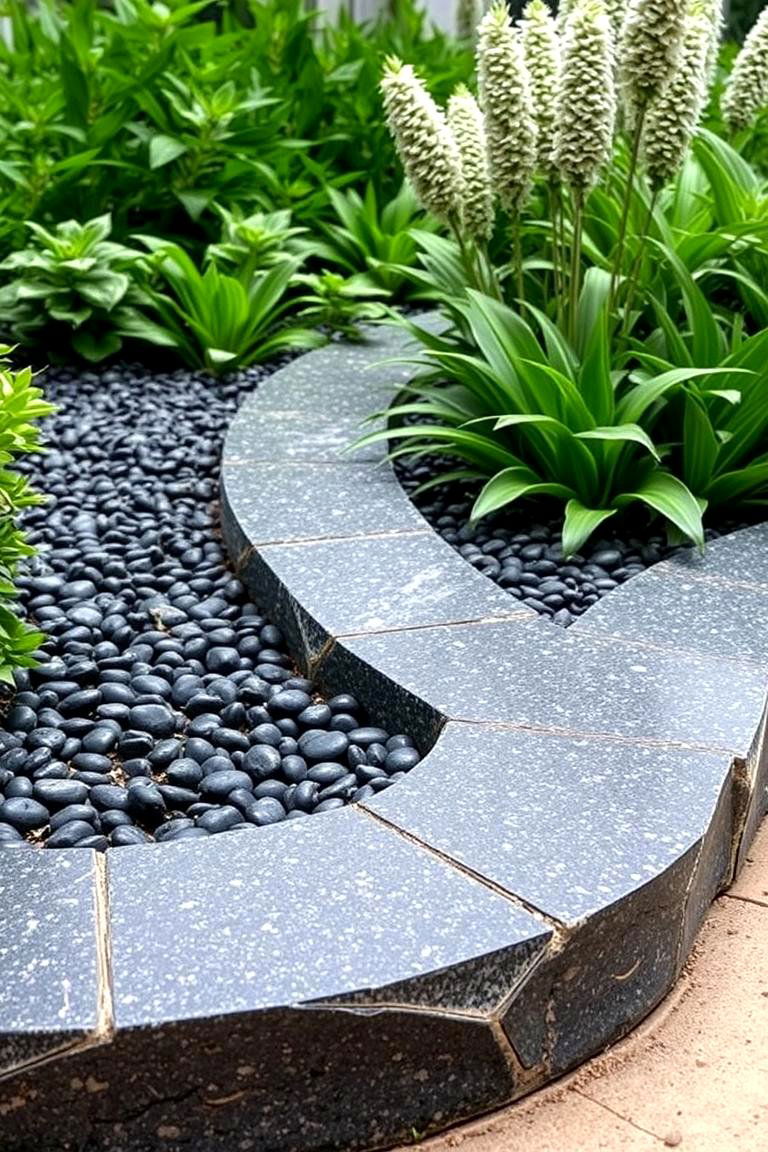
For a more polished and refined look, granite edging provides a sleek, smooth finish that adds sophistication to your garden. Available in various colors, granite's durability makes it a long-lasting choice for edging. Whether you choose dark or light granite, this material creates a high-end, sleek border that contrasts beautifully with colorful flowers or green plants, making it perfect for formal or contemporary landscapes.
13. Mulched Stone Edging

Combining stones and mulch can be an effective way to create an attractive and functional garden edge. By surrounding your plants with small stone borders and mulching the interior, you can add texture, suppress weeds, and retain moisture in the soil. The contrast between the smooth stones and soft mulch creates a visually appealing and eco-friendly edge that benefits your plants.
14. Tumbled Stone Edging
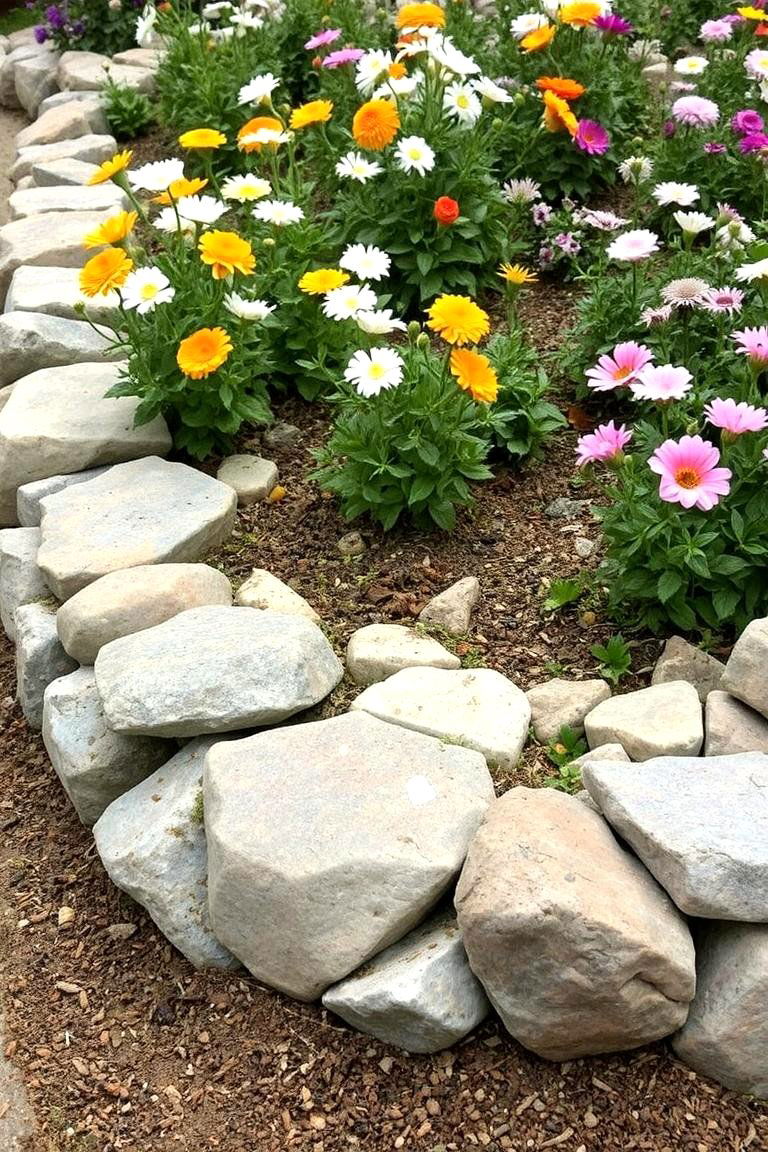
Tumbled stone edging has a softer, more natural look compared to sharp-cut stones. The edges of tumbled stones are rounded and smoothed through a tumbling process, giving them a weathered, organic appearance. This edging is ideal for informal garden designs, where the goal is to create a softer, more harmonious connection between the garden and its surroundings. Tumbled stone is also durable and requires minimal maintenance.
15. Dry Stack Stone Edging
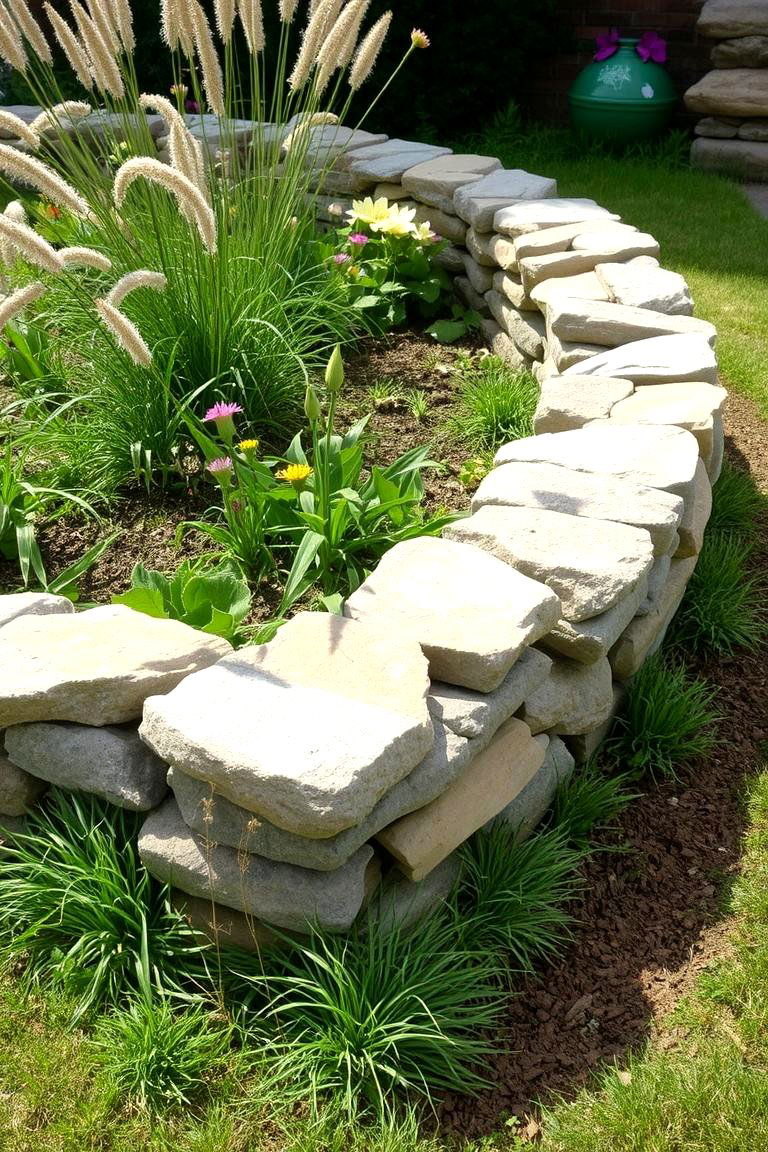
Dry stack stone edging involves stacking stones without mortar, creating a rustic and organic border. This method allows for flexibility in design, as the stones can be arranged to fit the contours of your garden. Dry stacking is a great option for creating natural-looking borders that blend seamlessly with plants, and it’s also highly durable since the stones are tightly stacked and secure without the need for adhesive.
16. Recycled Stone Edging
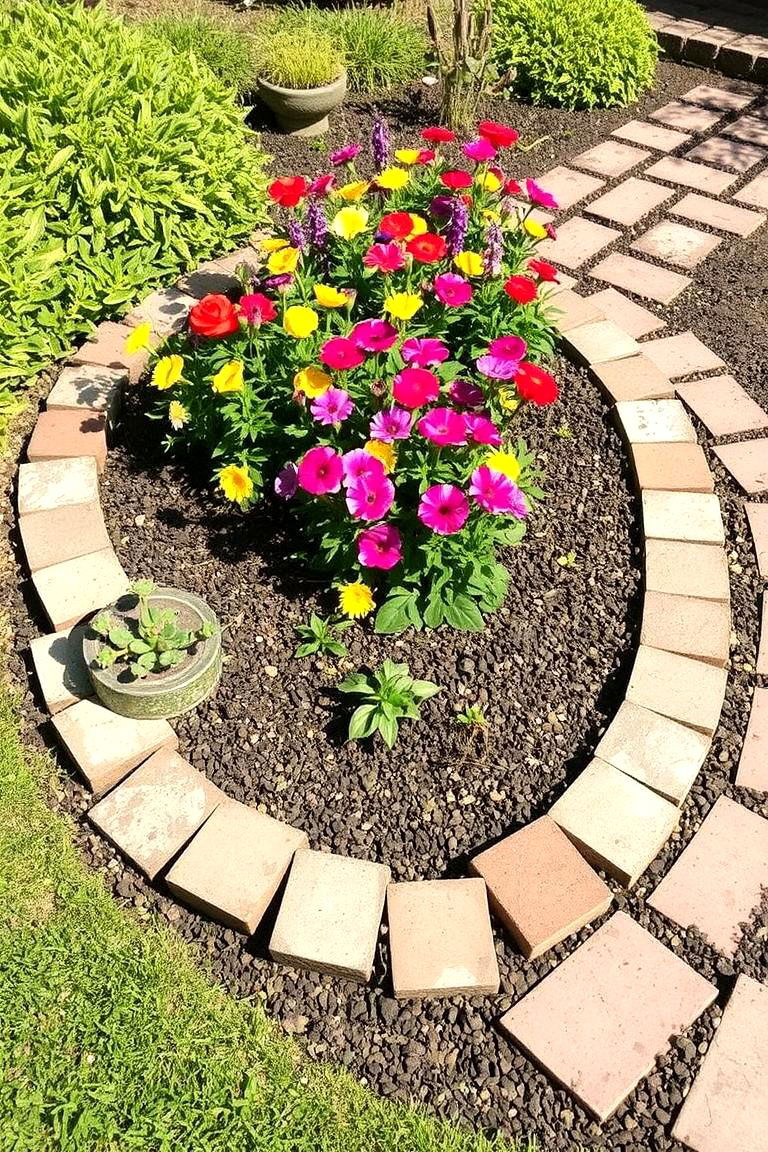
Using recycled stones is a sustainable and eco-friendly way to edge your garden. Whether you're using leftover paving stones, old bricks, or repurposed stones from demolished structures, this type of edging provides a unique, personalized touch. Recycled stone allows you to give new life to materials that would otherwise go to waste, all while contributing to a greener environment.
17. Mosaic Stone Edging
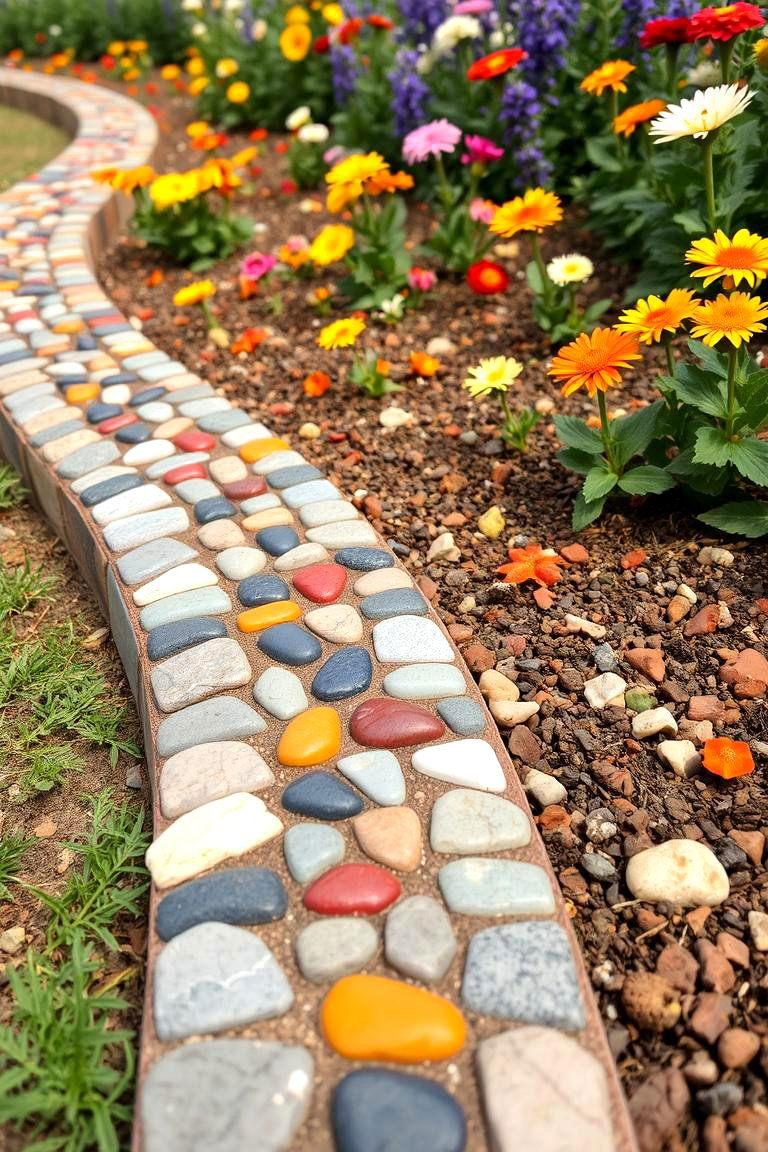
If you're looking for something unique, mosaic stone edging offers a creative, artistic approach to defining garden borders. Using smaller stones of various colors and shapes, you can create intricate patterns or designs that stand out. Whether you choose geometric shapes or flowing, organic patterns, mosaic stone edging adds a colorful and textured element that makes your garden feel like a work of art.
18. Gravel Stone Edging
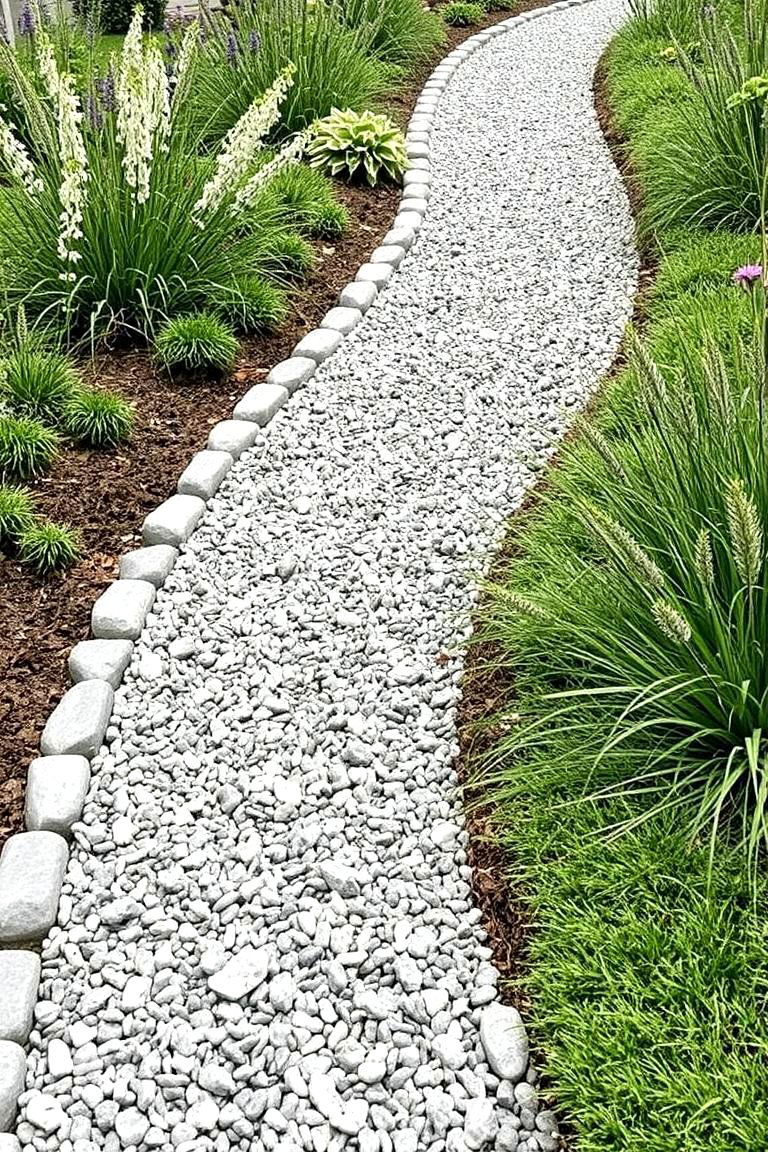
Gravel is a low-maintenance and affordable option for garden edging. By using small gravel stones, you can define garden beds, walkways, or pathways without creating a solid barrier. Gravel allows water to pass through easily, making it a good choice for areas with drainage concerns. Plus, its loose, natural appearance works well with both modern and rustic garden designs.
19. River Pebble Edging
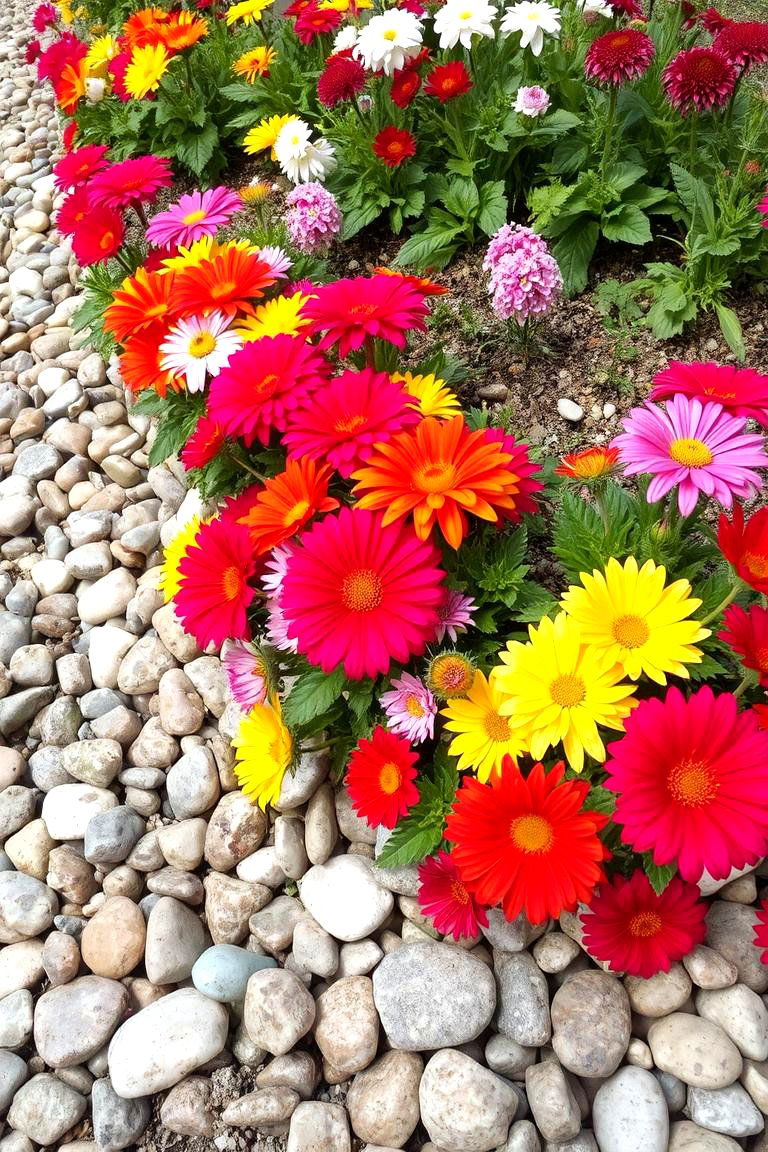
River pebbles create a smooth, polished look along garden edges. These stones can be arranged in rows or circles to form an aesthetically pleasing border. Their smooth texture and natural colors enhance the look of any garden, especially when combined with vibrant flowers or low-maintenance plants. River pebbles can also help with erosion control, making them a practical choice for sloped gardens.
20. Terracotta Edging Stones
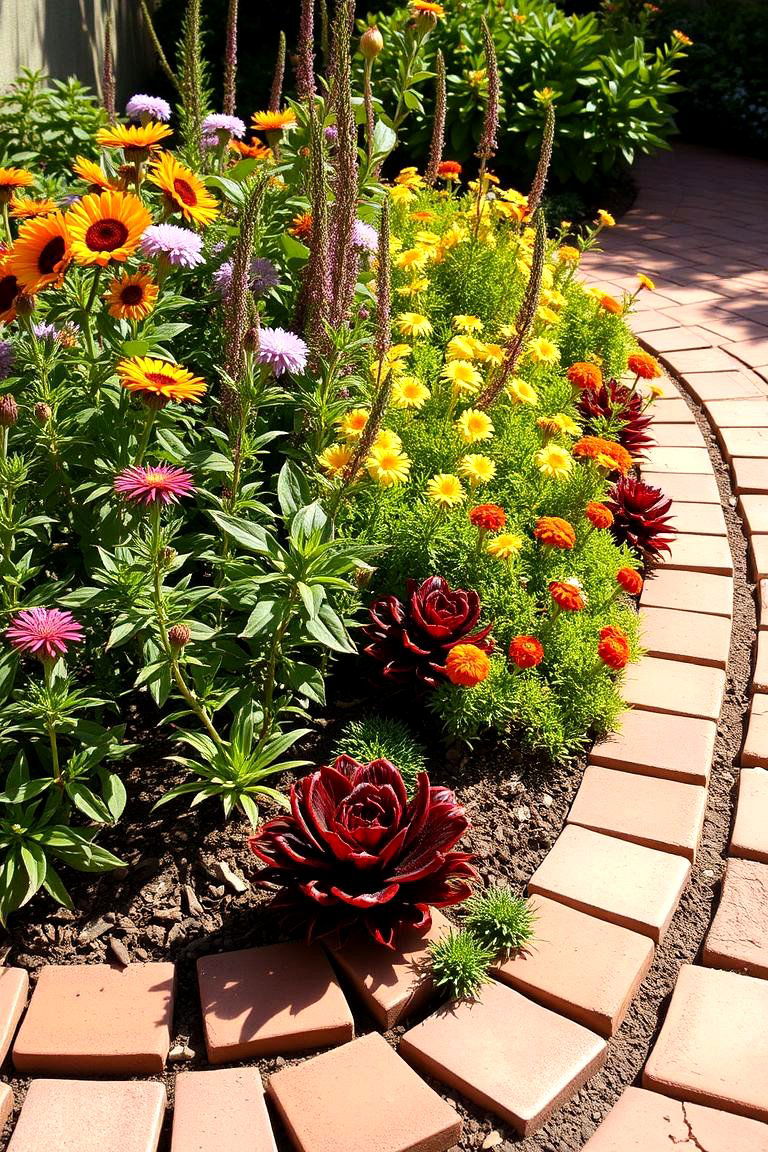
Terracotta edging stones bring a warm, Mediterranean flair to your garden. Their reddish hues add richness to the landscape, making them ideal for sunny garden beds or pathways. Terracotta is lightweight and easy to install, and its porous nature helps with water drainage, preventing soil erosion. These stones are perfect for creating borders around flower beds, vegetable gardens, or even along pathways.
21. Round Stone Edging
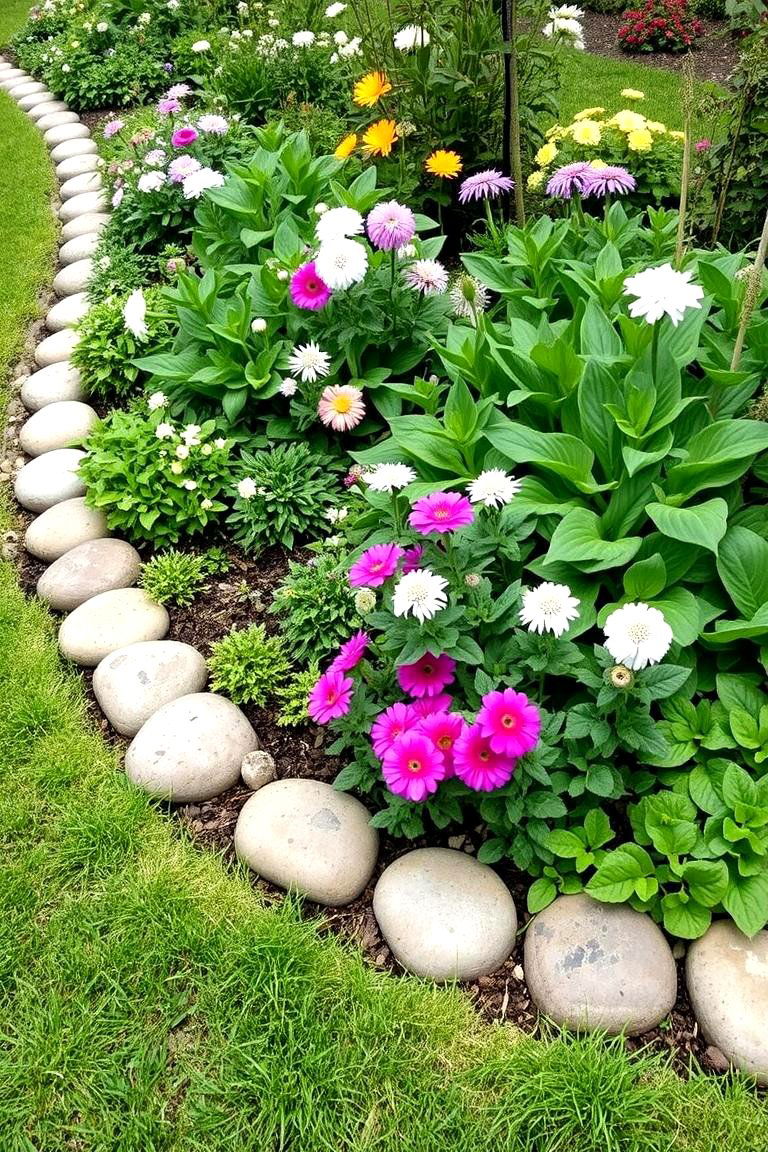
Round stones create a charming, soft edge for garden beds, adding a natural, flowing boundary. The rounded shapes make them easy to place in tight spaces, while their smooth surfaces allow for a more relaxed, informal look. Round stones are great for creating curves, helping to soften the edges of your garden and give it a more approachable, natural feel.
22. Spiral Stone Edging
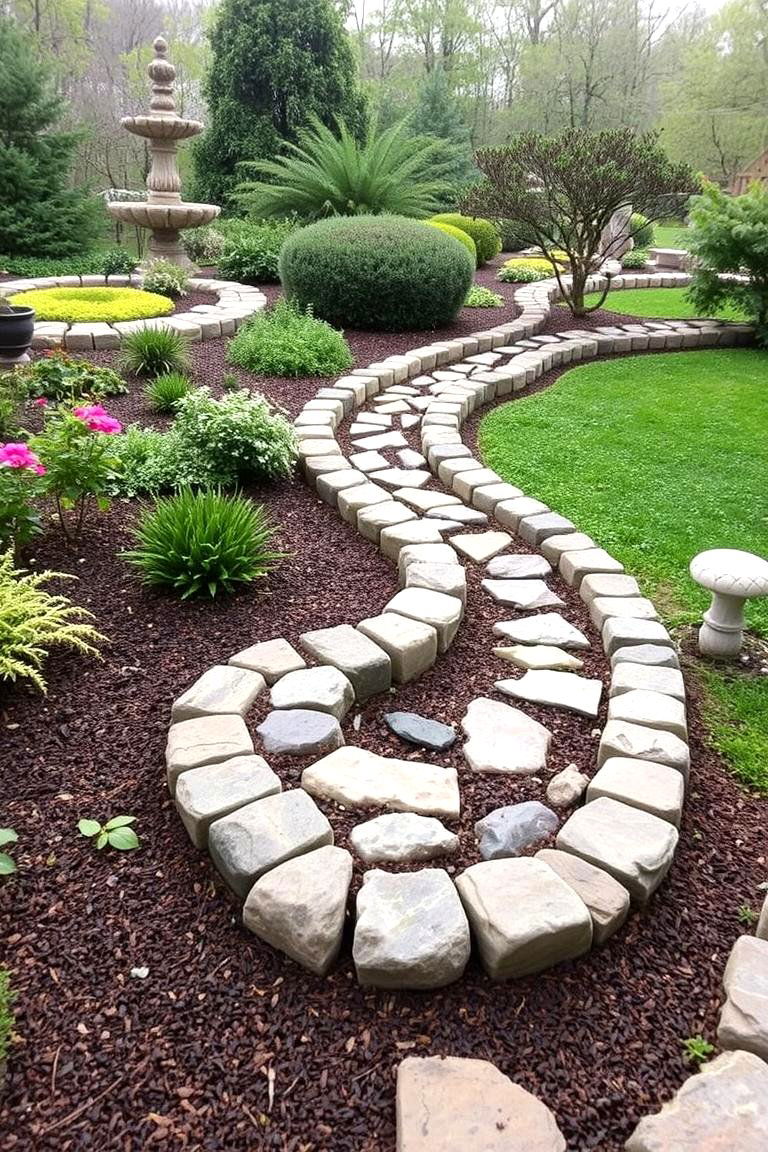
If you're looking for a more creative and dynamic edge, spiral stone edging offers a unique, twisting design that can guide the eye through your garden. Arranged in a spiral pattern, the stones create an optical illusion that draws attention to the focal points in your garden. This design works especially well for creating visual interest and leading visitors down garden paths or around plant beds.
23. Stone and Wooden Edging Combination
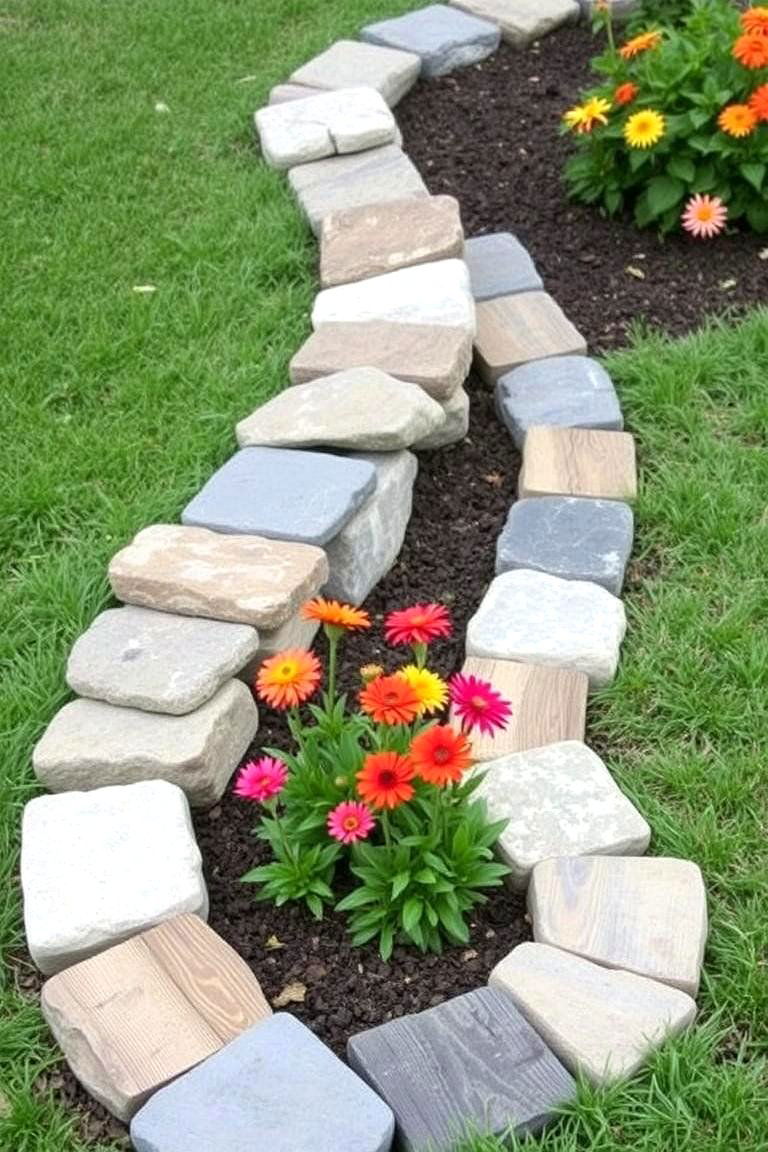
Combining stone with wood creates a beautiful contrast that blends natural materials. Stone borders provide structure and stability, while wooden elements add warmth and texture. This combination works well in both traditional and modern gardens, providing a durable, eco-friendly edge that complements various planting styles. Whether you use reclaimed wood or freshly cut planks, this pairing adds visual interest and balance.
24. Colored Stone Edging
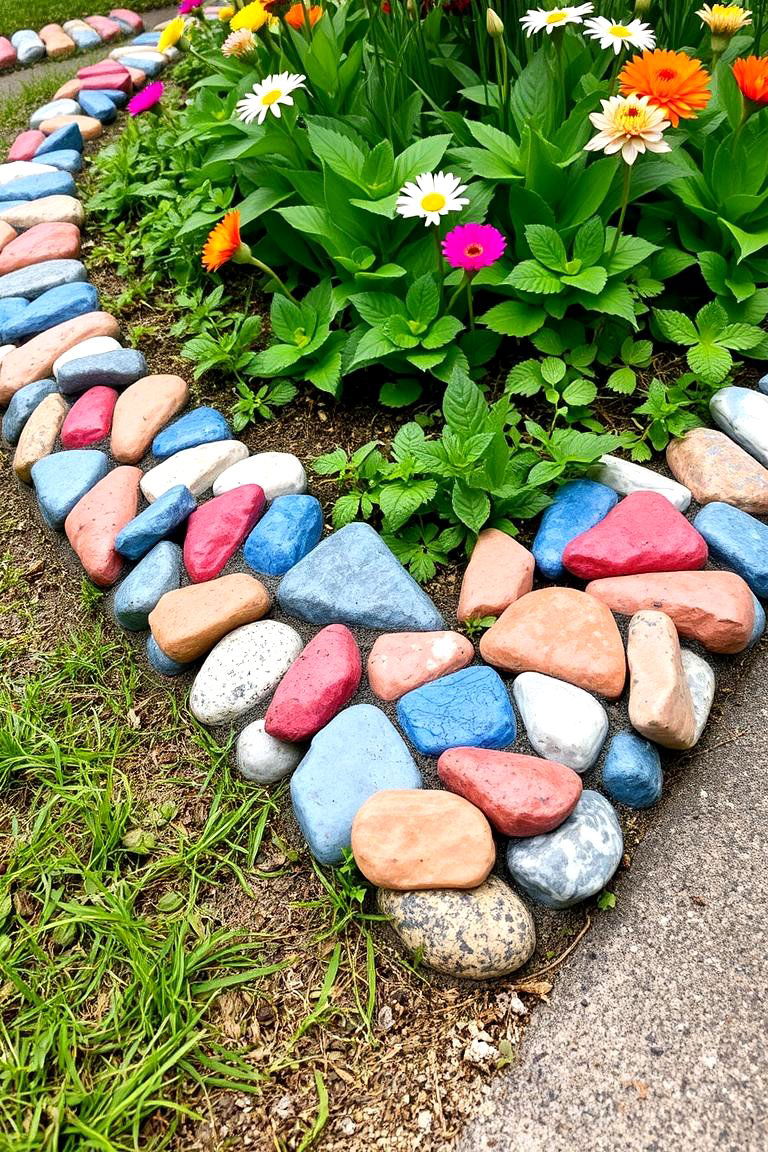
For a pop of color in your garden, consider using colored stone edging. These stones come in vibrant hues such as reds, blues, and purples, adding an eye-catching accent to your landscape. Colored stones are perfect for creating bold, defined borders around flower beds or pathways. They are available in various sizes, allowing you to mix and match to achieve the perfect contrast for your garden.
Conclusion:
Stone garden edging offers a versatile and aesthetically pleasing way to enhance your outdoor space. From natural river rocks to bold granite stones, the variety of materials and designs allows you to customize your garden’s look while also offering practical benefits like weed control and soil retention. No matter the style or size of your garden, there's a stone edging solution to suit your needs and elevate your landscaping project.


